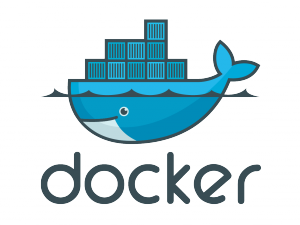Once we were able to have the Galera databases sync and aware of each other is was time to tackle the issue of “How do we register the service?”
So it was time to work on the Consul cluster, we considered using 3 different nodes for this cluster to add the another layer of redundancy to each component but the customer elected to run the Consul service on the same nodes as the Galera. It might seem like an odd point to have the discovery server run on the same node as the service is it monitoring, but the logic was “if the Galera node is down, then the Consul service is also degraded, and we will address them together”
So we build a 3 node Consul service, with agents on each of the Galera nodes.
each node was configured to join the cluster with 2 other nodes specified in the “start_join” directive
{
"server": false,
"datacenter": "foo",
"data_dir": "/var/consul",
"encrypt" : "",
"log_level": "INFO",
"enable_syslog": true,
"start_join": [ "172.2.6.15","172.2.7.10" ]
}The file was located in the /etc/consul.d/client/config.json this took care of the client/server sign up, but when about knowing if the Galera is up … Simple, we created a check that queries the backend database and reports back, this file , aptly named galera.json was located on the main /etc/consul.d directory
{
"service":
{
"name": "galeradb",
"tags": ["icinga-galera"],
"check": {
"id" : "mysql",
"name": "Check mysql port listening",
"tcp" : "localhost:3306",
"interval": "10s",
"timeout": "1s"
}
}
}this ensured that the Consul checked the response of the database and reported back to the cluster in case of a failure and make sure to allow election and deletion to the other nodes.
At this stage , then the backend was ready we started the Icinga installation, with 2 master and 2 web servers in a redundant connectivity (that documentation is found here ), and then we needed to configure the IDO to the Galera database, we hit an issue.
As we changed the /etc/resolv.conf on the Icinga nodes to use the 3 consul nodes , icinga use the Consul as the DNS and be able to resolve for the database:
/**
* The db_ido_mysql library implements IDO functionality
* for MySQL.
*/
library "db_ido_mysql"
object IdoMysqlConnection "ido-mysql" {
user = ""
password = ""
host = "galeradb.service.consul"
database = "icinga"
}but considering that many checks of the system relied on DNS resolving of external IP’s .. we were stuck with how we can ensure that the service returned the correct IP.
So we had to connect Icinga to a named server, in our case Bind9. We build a named service on the same nodes so we can make as little change on the icinga server and use the already configured DNS requests on port 53 [UDP] going to the consul servers to work for us.
A very basic named.conf :
options {
directory "/var/named";
dump-file "/var/named/data/cache_dump.db";
statistics-file "/var/named/data/named_stats.txt";
memstatistics-file "/var/named/data/named_mem_stats.txt";
allow-query { any; };
recursion yes;
dnssec-enable no;
dnssec-validation no;
/* Path to ISC DLV key */
bindkeys-file "/etc/named.iscdlv.key";
managed-keys-directory "/var/named/dynamic";
};
include "/etc/named/consul.conf";Notice the inclusion of the consul.conf file , this is where the “magic” happens:
zone "consul" IN {
type forward;
forward only;
forwarders { 127.0.0.1 port 8600; };
};This file tells named to forward all DNS request to external DNS server except for those with a “consul” domain , which are then forwarded to the localhost on port 8600 ( consul’s default DNS port) ,and thus provide the IP of the Galera cluster, for any other IP is will go to the DNS of choice configured when the consul service was build, we choose the all too familiar “8.8.8.8” ( this is added to the cluster bootstrap stage )
"recursors":[
"8.8.8.8"
]So the next stage was to test the resolving and the system survival.




